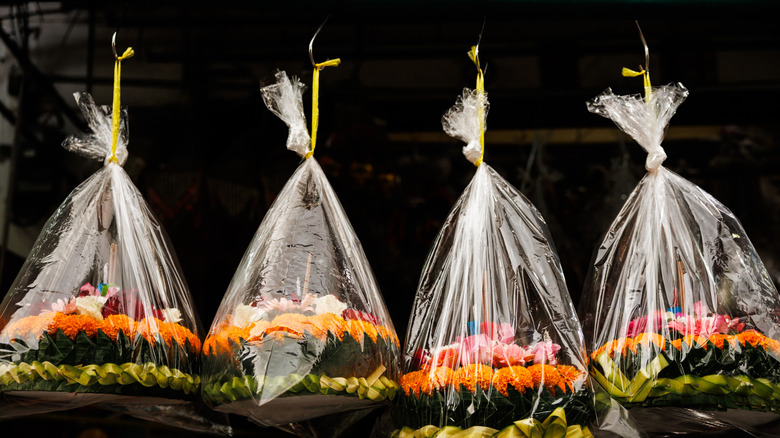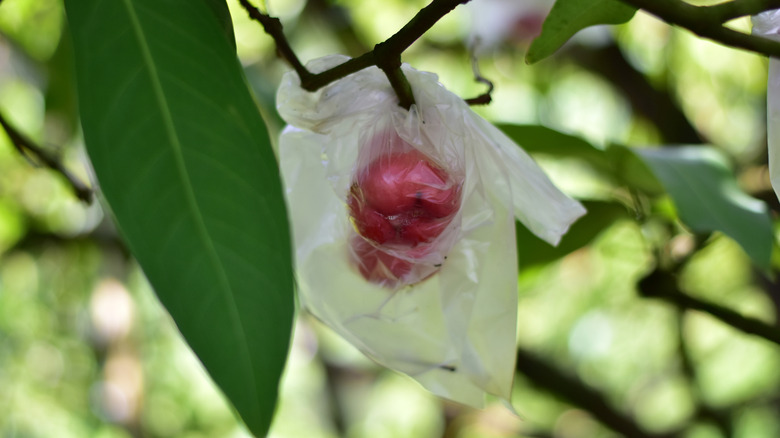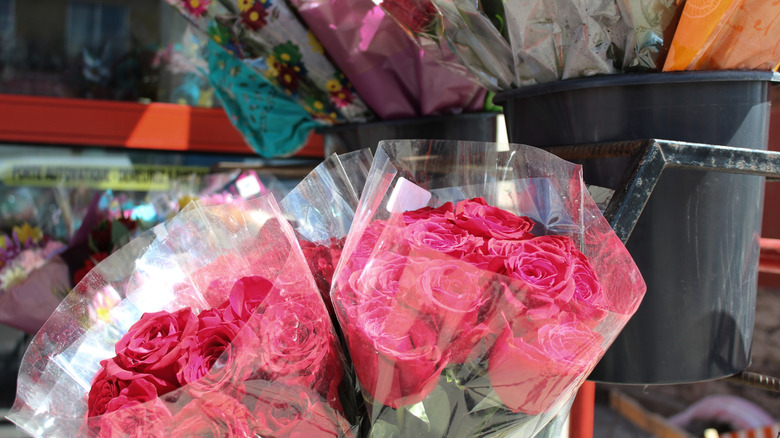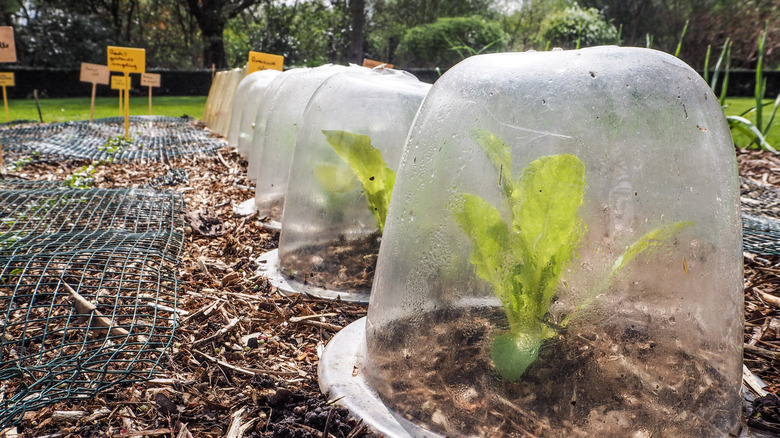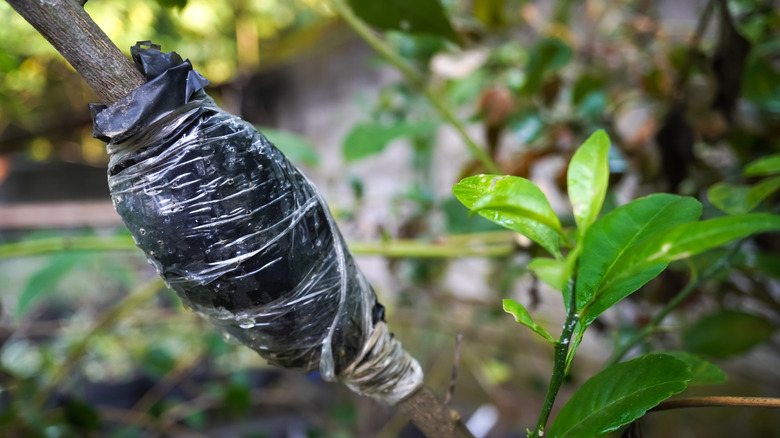7 Smart Ways To Use Plastic Wrap For Plants And Garden
Gardening enthusiasts are always looking for ways to reuse everyday household items in the garden. After all, reusing things can help cut costs and reduce waste. Some use rinsed milk jugs and other plastic containers inside large pots to save potting soil. Others use newspaper or cardboard as a mulch to suppress weeds and retain moisture in vegetable gardens. Plastic wrap, surprisingly, is another common household item that can help plants. For example, you can use it to keep your flowers fresh for longer in cut-flower arrangements.
It locks in the moisture, keeping the stems hydrated. Similarly, you can use plastic wrap for soil solarization to help get rid of weeds and insect pests in your garden. And believe it or not, you can even use plastic wrap to reduce insect damage and some diseases in your produce. Just make sure that you replace or remove these wraps after use and don't leave them lying in the garden. Not only do they look messy if left in the garden, but they also won't decompose in the soil.
Wrapping the produce to protect against infestations
While it doesn't make sense to do it commercially because of the immense labor involved, bagging fruit before harvest can help keep away pests and diseases and help improve quality, as well. Just wrap your fruit in two or three layers of plastic wrap, carefully seal the sides while leaving a bit of space for the condensation to escape. It creates a physical barrier that prevents pests and disease infestation. All you need to do after that is to remove the plastic two weeks before harvest, so your fruits can color properly.
Maintaining humidity for cuttings and delicate houseplants
If your cuttings and delicate houseplants keep wilting, chances are they are not getting enough moisture. That is where plastic wrap can help. Just take your cuttings and then wrap them in any moist material like grass or a paper towel, and cover them all in the plastic wrap. Don't seal it entirely, though. A little bit of airflow is a must to prevent fungal problems. And as for delicate plantings, if needed, you can support the plastic wrap with stakes or wires to prevent it from directly touching the leaves.
Using plastic wrap to make grafting more successful
When grafting fruit trees, keeping the union moist is a crucial step for success. This is where using plastic wrap can make all the difference. Not only will it prevent the union from drying out, but it will also help hold the partners together till the union forms. Preferably, you should cut 1-inch-wide strips of plastic wrap and start just below the union. Then move your way up, stretching the wrap as you go. Just don't wrap it too tightly, as it might prevent the flow of sap.
Creating small-scale soil solarization for weeds and pests
Soil solarization involves covering the soil with a clear plastic sheet to create a sort of greenhouse effect to take out weeds and pests. If doing it over a large area, you need a tarp, but plastic wrap will work great for small, localized treatments. Start by removing any plant material and debris from the area, and then level and irrigate the soil. Finally, cover the area with the wrap for four to eight weeks. It will heat the soil so much that any pests and weeds beneath it will die.
Creating row covers and micro tunnels
Row covers and microtunnels are low-cost and easy solutions if you want to extend the season for your favorite garden crops. They help control pests and open weeks of extra growing time by creating a favorable microclimate. Although when making them with plastic wraps, you might have to piece together several pieces using clear packing tape. Once the cover is ready, just take some metal stakes and use them to create arcs around your plants. Then stretch the plastic over it, and you are good to go.
Creating plastic-mulch caps to warm soil and reduce water loss
While eco-friendly mulch options are trending these days, plastic mulches are still used. They help retain soil moisture and increase soil temperature. Luckily, you can make your own plastic mulch at home using plastic wrap. Start by anchoring it securely somewhere near your desired plants on one side, and then stretch it to the other side. You can poke holes in it to let the plants or seedlings grow through it. However, make sure to check underneath regularly to avoid drainage and soil moisture issues.
Helping with air layering for difficult-to-root plants
Air layering is a process that is used for plants that do not root easily. It can also be used for plants that are difficult to establish from seeds and cuttings. Air-layering involves cutting a section of the stem and packing the spot with peat moss. Afterwards, the area is wrapped with plastic. You can also place foil around the plastic wrap to keep the roots protected from light. Once the roots appear, you can remove the plastic wrap, cut the stem, and place it inside a pot or the ground.
